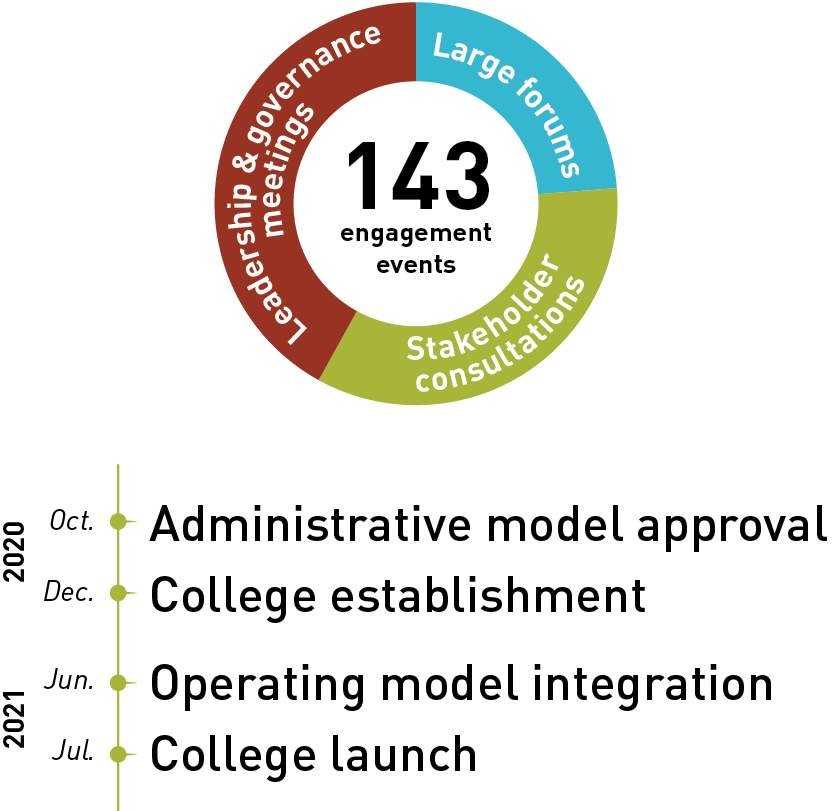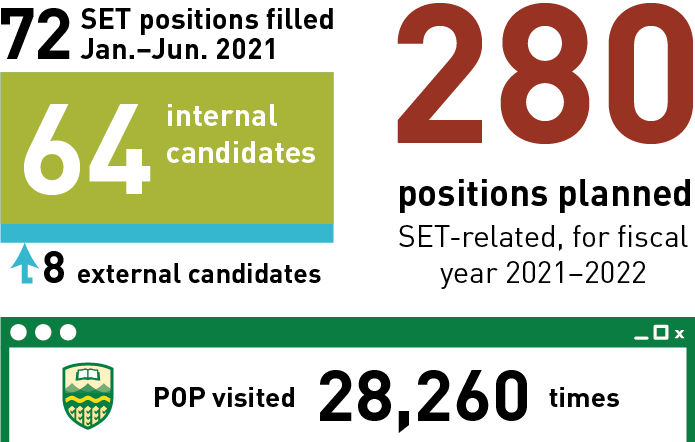Year one UAT retrospective
1 July 2021
Over the last year, the University of Alberta has launched and put into action an ambitious plan for transformation. We've been focused on the future university—one that is relevant, responsive, and nimble. A university that can grow and adapt to changing demographics and student needs. A university that engages with the critical issues and questions of our time and discovers the social and technical innovations the world needs.
Our vision is to set a new direction for the U of A and ensure that maximum resources are focused on our core mission of excellence in teaching, research, and community engagement. Through the U of A for Tomorrow (UAT), we aim to strengthen U of A's global leadership in higher education and research, and drive even greater social and economic growth, innovation, and creativity for the public good of the province and beyond.
Milestones to date
One year ago, we began meeting as a community to discuss, develop, and put into action the strategic goals of UAT. To meet the scale of our challenge within limited time constraints, broad consultations have been frequent and productive. Thanks to the efforts of faculty, staff, and students across the university, these consultations have led to important, tangible progress on attaining our academic and administrative restructuring goals while achieving financial savings.
Community leadership
Members of senior leadership, faculty, staff, and student associations—from multiple disciplines, employment groups, and campuses—have played key roles in designing our new models, guiding decisions, questioning proposals, and leading change.
Consultations and outcomes
Hundreds of meetings and workshops, involving staff and faculty across the university, have resulted in a clearer picture of which activities occur where. From that information, detailed data workbooks have been compiled, service catalogues created, and new organizational structures designed.
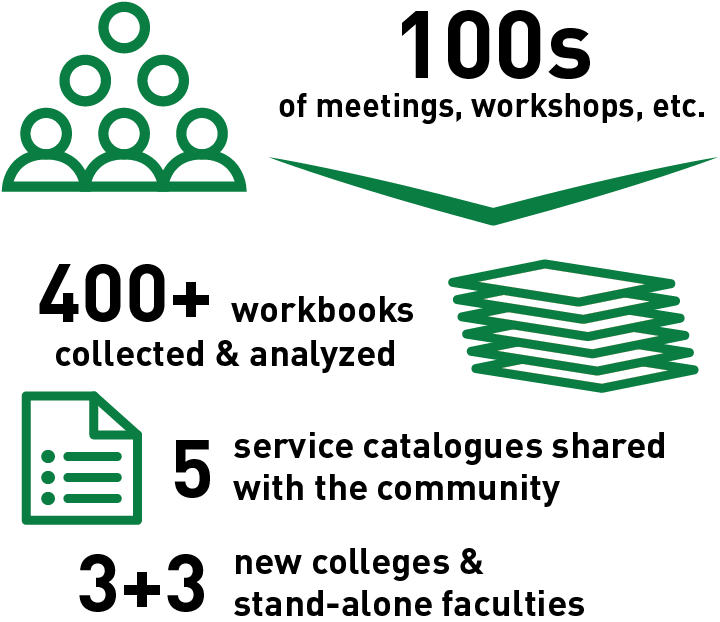
Community engagement and information sharing
Senior leadership committed to open and frequent communication. The community has stayed informed and engaged—shared ideas, asked questions, and helped to refine plans. The numbers confirm that this has been a collective effort.
Pulse surveys
Since August 2020, hundreds of U of A employees have participated in monthly pulse surveys. To date, surveys have gone to 5600 employees, with an average response rate of 35%. The purpose of the pulse surveys is to gage community understanding of the vision and goals of UAT, gain a sense of how the university community feels about both academic and administrative transformation, and measure their readiness for change. Learn more »
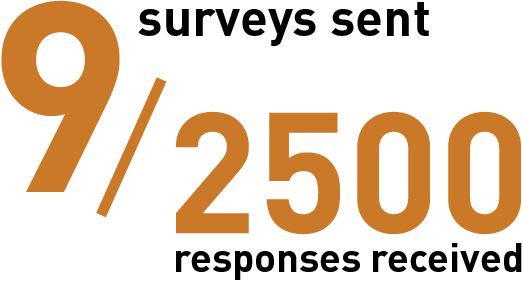
People and job transitions
We are now three-quarters of the way through SET, representing a historical shift from a decentralized model of delivering services and functions to a more centralized, hybrid model. While most staff will continue in current roles, hundreds will shift positions and responsibilities by the expected completion on April 1, 2022. Through these changes, retaining U of A talent is key. To date, 89% of SET-related new positions have been filled internally.
Rapid process improvements
Providing high quality services with fewer dollars and fewer people means that we have had to imagine doing things differently. We asked you for opportunities for administrative improvements that could remove unnecessary steps or streamline processes. We were able to put these in place quickly or use the feedback to prepare longer-term improvements. Learn more »
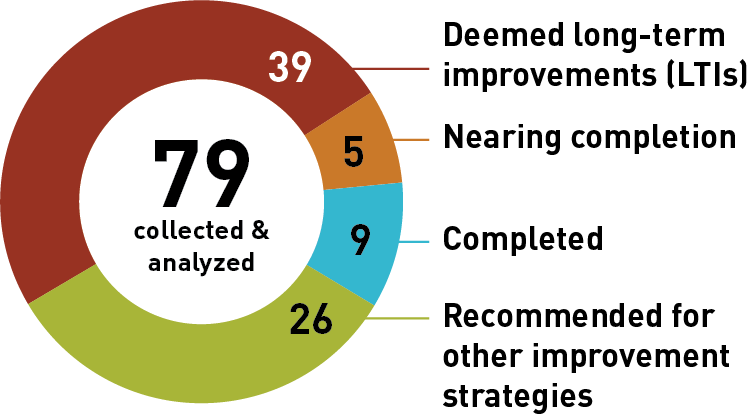
Achieved 54% of total required savings
Meeting the challenge of significant reductions to U of A's government funding is a core goal of UAT. Achieving long-term financial sustainability and being able to reinvest the maximum resources in the U of A's core teaching, research and community engagement mission is essential. We are more than halfway towards meeting our goals.

What's next?
The first year of UAT was focused on developing and designing the plan. Transitions are well underway and many more are to come. This summer, we will launch both our new student and staff service centres as well as the Shared Services unit. An estimated 200 positions will be posted and filled over the next 9 months. The fall will bring strategic planning processes in each college and more.
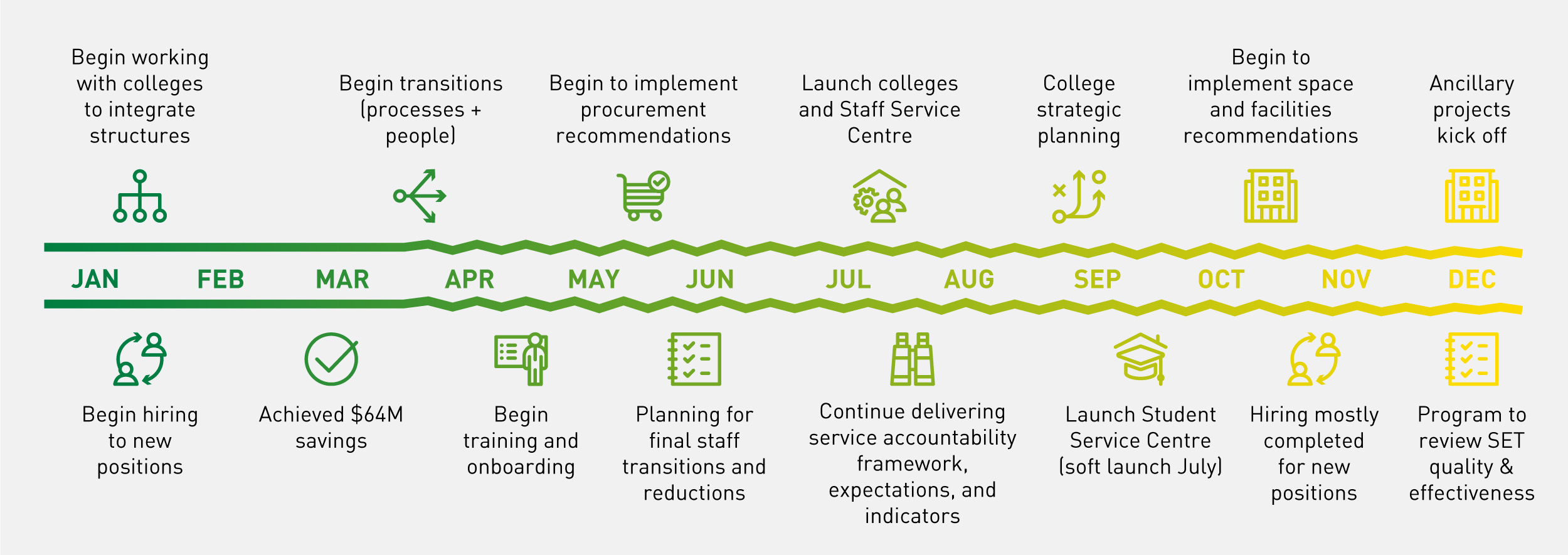
- 2021 UAT timeline
- January
- Begin working with colleges to integrate structures
- Begin hiring to new positions
- March
- Achieved $64M savings
- Begin transitions (processes + people)
- April
- Begin training and onboarding
- May
- Begin to implement procurement recommendations
- Planning for final staff transitions and reductions
- July
- Launch colleges and Staff Service Centre
- Continue delivering service accountability framework, expectations, and indicators
- August
- College strategic planning
- September
- Launch Student Service Centre (soft launch July)
- October
- Begin to implement space and facilities recommendations
- Hiring mostly completed for new positions
- December
- Ancillary projects kick off
- Program to review SET quality & effectiveness
- January
Where are we headed?
Throughout the first year of UAT, the university community has pulled together at a difficult time, and through those efforts, we are well on our way to reaching our targets. We are also sharpening our focus on future opportunities for growth, including in enrolment to accommodate the increasing numbers of Alberta students graduating from high school. We will build on what we have learned during COVID in new online program development, and we are repurposing some of our assets to drive new revenue growth for the university. Our current restructuring will put the university on a solid financial footing—from there we can seize opportunities for growth and reinvestment in our core mission of teaching, research and community service.
